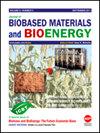Effects of Cortex meliae on the Intestinal Flora in Rats
IF 0.5
4区 医学
引用次数: 0
Abstract
Objective: Studies have revealed that traditional Chinese medicine (TCM) regulates gut microbiota, which have a important stone in human health and disease development. Cortex meliae is a medicinal herb that has anti-inflammatory, analgesic and anti-tumor effects, but its influence on intestinal flora has not been reported yet. Here, the effects of different doses of Cortex meliae on the distribution of microflora in different intestinal segments were studied in order to provide information for disease prevention and control based on intestinal flora. Methods: Samples of the duodenum, ileum, colon and jejunum (including gut contents) were taken from rats administered different doses of Cortex meliae decoction by gavage at time points of 7, 14 and 21 days. Bacterial numbers in each intestinal segment were observed using qRT-PCR. Results: (1) For Enterococcus, of which the growth was promoted in the ileum (lle) and was inhibited in the duodenum (Duo) and colon (Col) by Cortex meliae, while the growth of Enterococcus was first inhibited and then promoted in the jejunum (Jej). (2) The growth of Colibacillus was inhibited by Cortex meliae in the Duo, Jej, Ile and Col. (3) Cortex meliae had an inhibitory effect on the growth of Bacteroides in the Due, and has a stimulating effect on the growth of Bacteroides in the Jej, Ile and Col. However, with the prolongation of the administration time, the above promoting or inhibiting effects were sometimes lost or the opposite effect appeared for some intestinal segments or bacteria, and there was a certain dose effect. Conclusion: The effects of Cortex meliae on three dominant intestinal bacteria (Enterococcus, Colibacillus, and Bacteroides) were different in different intestinal segments and had obvious quantitative and temporal regularity.麦角菌对大鼠肠道菌群的影响
目的:研究表明,中药对肠道菌群的调节作用在人体健康和疾病发展中起着重要作用。香皮是一种具有抗炎、镇痛和抗肿瘤作用的中草药,但其对肠道菌群的影响尚未见报道。本研究旨在研究不同剂量的香皮对不同肠道菌群分布的影响,以期为基于肠道菌群的疾病预防和控制提供信息。方法:分别于7、14、21天灌胃不同剂量苦参汤大鼠的十二指肠、回肠、结肠、空肠(含肠道内容物)标本。采用qRT-PCR法观察各肠段细菌数量。结果:(1)对于肠球菌,其在回肠(lle)中促进生长,在十二指肠(Duo)和结肠(Col)中抑制生长,而在空肠(Jej)中先抑制后促进生长。(2)大肠杆菌的生长被抑制皮质meliae Duo, Jej, Ile和(3)上校皮层meliae对拟杆菌的生长有抑制作用,由于拟杆菌的生长的刺激效应,Jej, Ile和上校然而,随着时间的延长政府,上面的促进或抑制效应有时丢失或相反的效果出现在一些肠段或细菌,并有一定的剂量效应。结论:蜜皮对肠球菌、大肠杆菌、拟杆菌3种优势肠道菌群在不同肠段的作用不同,且具有明显的定量和时间规律性。
本文章由计算机程序翻译,如有差异,请以英文原文为准。
求助全文
约1分钟内获得全文
求助全文

 求助内容:
求助内容: 应助结果提醒方式:
应助结果提醒方式:


